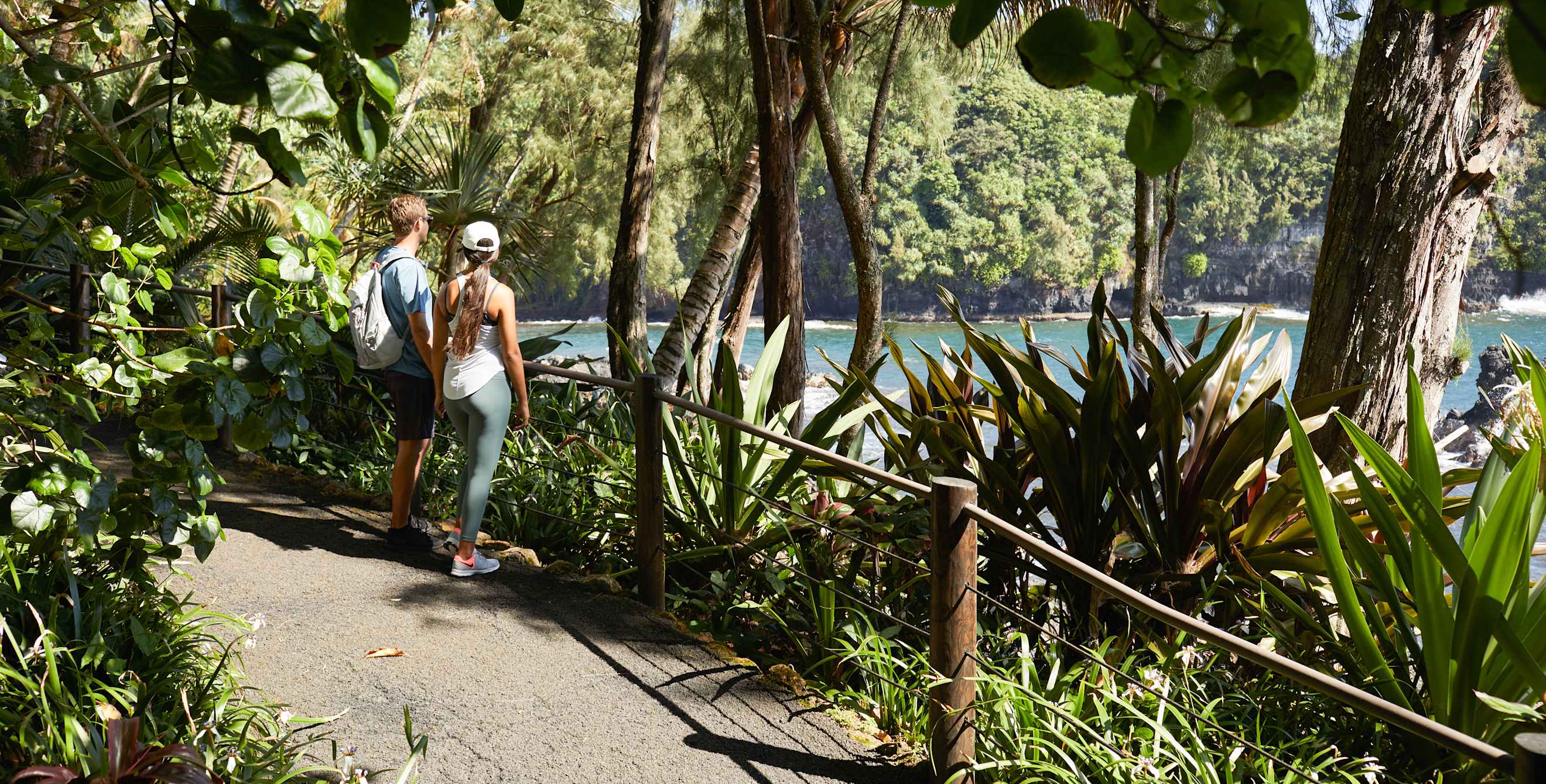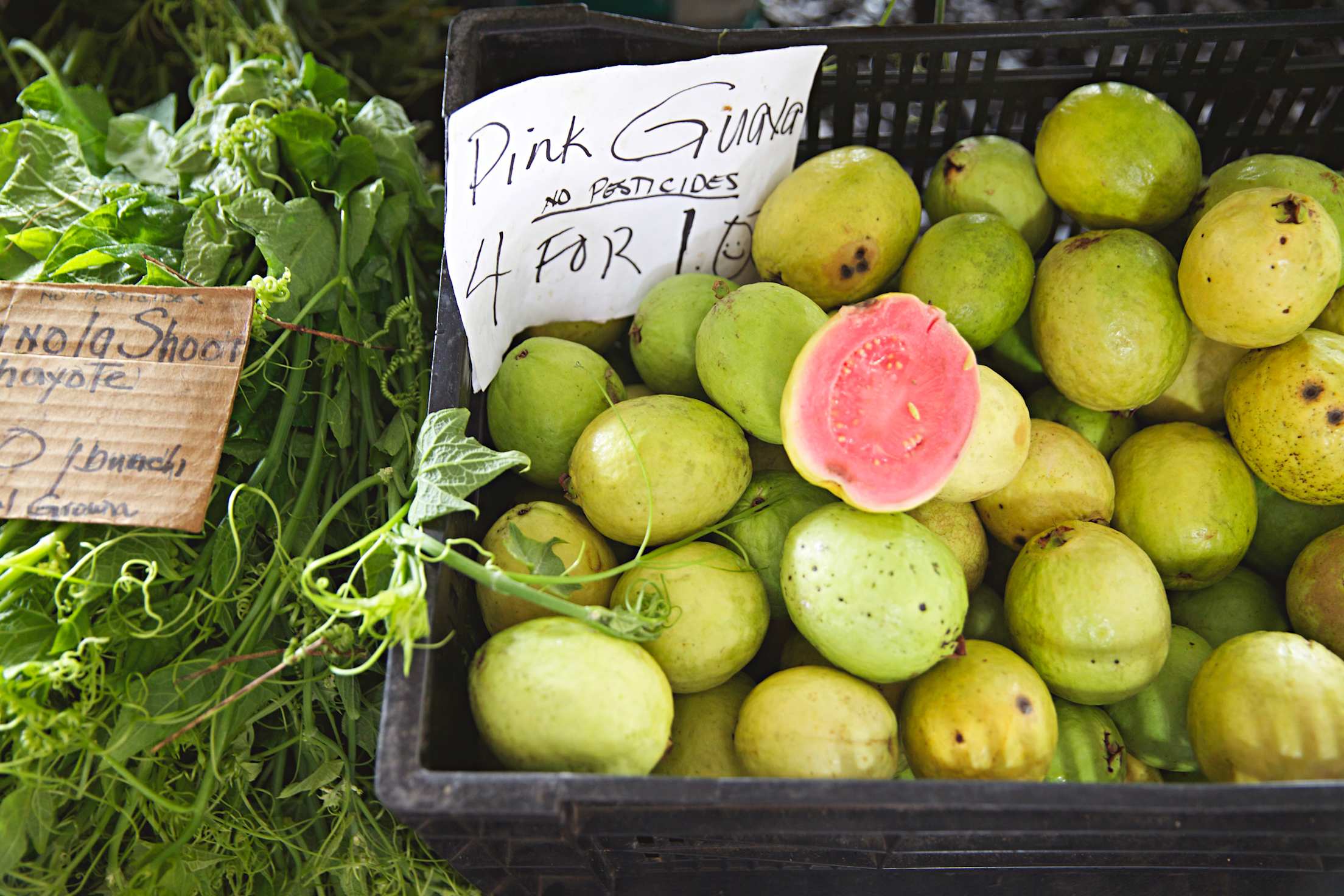
Things to do in Hilo, Hawai‘i
On the Big Island, visitors find a low-key town, tropical splendor, and an active volcano.

Rain may fall on you while you’re in Hilo, and if it does, it will be glorious. Sheets of water, often warm, may pour down in deluges, or you may be kissed by a light shower, then it will stop as suddenly as it started. Afterward, the sun will reappear—and that will be glorious, too.
With rain falling most days year-round, Hilo is one of the country’s wettest cities, thanks to its location on the Big Island’s eastern, windward coast. If the sandy, sunny western shore is Hawai‘i Island’s hit single, this relaxed college town and its verdant, awe-inspiring surroundings are the B-side: intimate, distinctive, a cult favorite that’s easy to love.

The walkable downtown, a cluster of streets bordering Hilo Bay, is an excellent zone for taking Hilo’s slow, steady pulse. The restaurant Pineapples, on a corner two blocks inland, sets a tropical mood with its open sides and fruity cocktails. From there you can people watch as shoppers laden with avocados and papayas leave the bustling farmers market up the street.
A couple of blocks away, the Pacific Tsunami Museum fills in the local backstory, illustrating how the ocean has repeatedly reshaped the town. In one exhibit, a parking meter bows nearly 90 degrees in testimony to the ocean’s power. Between the restaurant and the museum, colorful wooden storefronts house low-key eateries, boutiques, and galleries as well as the Palace Theater, a neoclassical 1925 building that hosts movies and live shows.

Nearby natural wonders form a stirring counterpoint to civilization. Six miles north of downtown, Hawai‘i Tropical Bioreserve & Garden sends you down a boardwalk into a valley bursting with greenery and flowers, all the way to an ocean view. Just east of downtown, Rainbow Falls drops 80 feet into a pool below, sending up spray that refracts the light. The best time to see rainbows at the falls is typically late morning, as the sun makes its way across the sky.
Of course, water isn’t all that defines this corner of the island: Hardened lava is always underfoot. Get in touch with its source at Hawai‘i Volcanoes National Park, about 30 miles southwest of Hilo. There, the four-mile Kilauea Iki Trail leads down through deep-green rain forest to the bare black floor of a small caldera that last erupted in 1959. In spots where seeping rain meets subterranean heat, steam wafts from cracks and the ground radiates a gentle warmth. Touching it stirs a tingling recognition of the earth's depths.
"People think of volcanoes as destructive," says park spokesperson Jessica Ferracane, "but the volcanoes create this beautiful landscape. A lot of the forest wouldn't be here without them."

Active lava flows come and go at various points around the park (as well as outside of it), so check the park’s website for news. At 4,000 feet above sea level, the weather can be cold at night and in the early morning, so bring heavy layers. Basking in the crater’s red glow under a canopy of stars is unforgettable, and staying warm as you do it is essential.
The stars are just as important to Hawaiian culture as the rain and the lava, and you can learn more about them and their importance to early voyagers with a trip to ‘Imiloa Astronomy Center. The planetarium, displays, and special events make learning fun for all ages, and the Center’s newly opened Lehua Restaurant gives guests a taste of the variety of cuisines that make up contemporary Hawaiian cuisine, making it a perfect place to spend the afternoon (especially if you need to get out of the rain).
Another taste of the Big Island can come from its growing beverage scene that highlights local ingredients and flavors ranging from beer at Hilo Brewing Company and Wailuku Brew Works to mead at Big Island Meadery. At Ola Brew’s Hilo Taproom guests can enjoy lunch while tasting a variety of hard juices, ciders, seltzers, beers, and hard teas. With beverages made with white pineapple, dragon fruit, lilikoi (passion fruit), and more it’s hard to choose just one of Ola’s drinks—go for a flight to try a variety before grabbing a six-pack or growler of your favorite to take with you.
To see all of those incredible island-grown ingredients up close, consider taking a tour of one of Hilo’s many farms. For the widest variety of crops, OK Farms offers a 1.5-hour tour through their 1,000-acre tropical fruit estate where you’ll learn about and taste everything from coffee and cacao to lychee and cinnamon. Included in the tour is a unique view from atop Rainbow Falls and Wailuku River. For those crazy about chocolate, check out the tree-to-chocolate farm tour at Lavaloha Chocolate where you’ll get to see cacao in its natural state before watching the process of making a chocolate bar.
Get more out of your vacation: Book through AAA Travel for exclusive Member benefits.